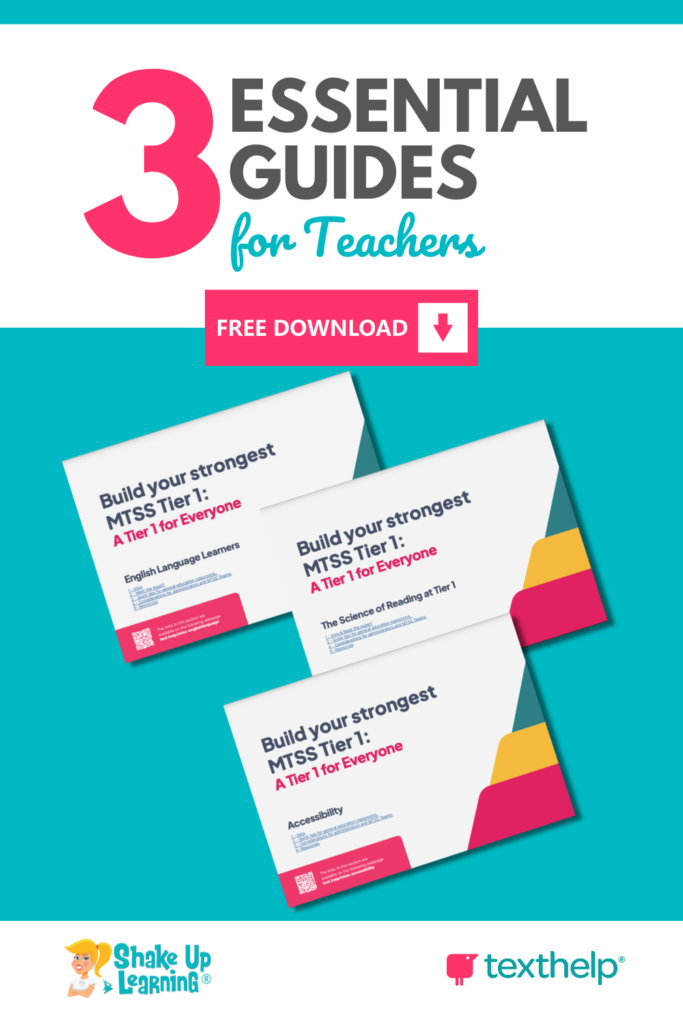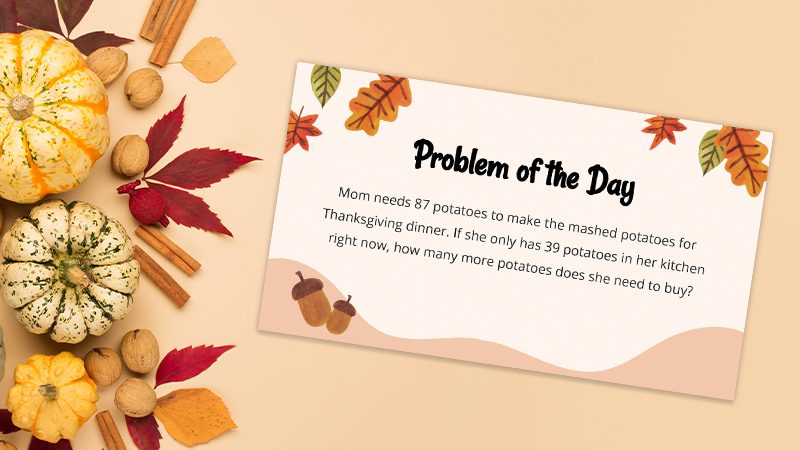The post 3 Essential Guides for Teachers: Adapting Instruction to Every Student Ability appeared first on Shake Up Learning.
Get ready for some fantastic news from Texthelp—your go-to for making learning accessible and joyful for every student.
Over the last decade, I’ve had the privilege of collaborating with Texthelp on numerous occasions.
Time and again, they’ve proven themselves as a steadfast ally in our shared mission to make education accessible for all students. I deeply respect their dedication to developing practical, free resources for educators.
They’ve whipped up three incredible guides packed with expert tips to spice up your teaching.
From easy-peasy captioning tricks to making lessons visually vibrant and beyond, these resources are game-changers.
Whether you’re looking to enhance reading skills or make content more engaging for every learner, these guides have got you covered.
Dive in and watch your classroom transform into a place where learning knows no bounds.
This blog post is sponsored by Texthelp.
3 Essential Guides for Teachers: Adapting Instruction to Every Student Ability
by Mary Pembleton from Texthelp
As an accessible technology company, Texthelp is always looking for ways to support educators with the diverse learning needs in their classrooms.
To help, our content team recently asked five experts to share their best tips: a researcher, two teachers turned education journalists, an accessibility consultant, and one AT specialist.
Get the Guides!
They gave us excellent advice, and from it, we created three downloadable guides:
A guide about inclusive reading instruction
A guide to supporting English Language learners in general education classrooms
A guide to essential accessibility practices in schools and classrooms.
…with more on the way.
These guides include advice for administrators and MTSS teams, loads of research studies, and lots of quick tips for educators who need simple ways to adapt grade-level instruction to the different levels of abilities, backgrounds, and needs in their classrooms.
Below are six of their best tips. To gain more, head over to the Texthelp website to get the complete guides delivered to your inbox.
1. Turn on captions when teaching as another way for students to take in information.
It’s easy, free, and super-supported by research.
Turn on live captioning in Google Slides as a visual aid in the classroom, even if you aren’t using a slide deck to teach.
Who it benefits, and how:
Learners who are deaf/hard of hearing by allowing them access to the content in an alternative way
English Language Learners by helping with pronunciation, language acquisition, and comprehension
Learners who are learning to read by increasing exposure to print and building literacy skills
All learners by improving comprehension, attention, and memory of the video content
How to do it:
To display the captions in a captioned video, simply click the “CC” button.
To add live captions to any lesson you teach verbally, you can enable live captions with one quick adjustment in Google Slides.
Here’s how to set up live captions in a Google slide presentation:
Ensure your computer’s microphone is on
Click or enable “Present” in Google Slides
At the bottom left of your screen, select “More options.”
Click “Captions Preferences”
Toggle captions on.
Now, when you speak, live captions will appear on your screen or smartboard.
For more information about live captioning options in Google Slides, visit the “Present slides with captions” section of the Google Help Center here.
2. Teach with a microphone.
Remote Microphone Systems were created for people who have difficulties hearing, and are often used as an assistive technology in the classroom.
Casual microphone use by a classroom educator should never replace necessary assistive technology support. However, the voice amplification offered by any microphone could be a helpful tool for engaging students who have trouble with listening, students with autism, and lend a hand with classroom management.
Pair sound amplification with free live captioning in Google Slides, listed above, for added benefit.
3. Have students record themselves reading, and listen back to it.
To help learners of all abilities with their reading skills, ask them to record themselves reading a text out loud and then listen back to it. This helps struggling readers, beginning readers, and ELLs improve their reading fluency.
4. Use visuals to supplement instruction automatically.
Including visuals in your instruction is a great way to build understanding in all learners, particularly EL Learners and learners with autism, who benefit from the easily understandable additional context of visuals.
To empower learners with one-click visuals while reading, try Read&Write’s visual dictionary tool. Learners can click on an unfamiliar word in a text, and the visual dictionary feature will give them a picture to help them understand it.
Related: How to Create a Dynamic Reading Experience
5. Give everyone the same required readings, and show students how to adjust the reading level.
Rewordify is a free tool that allows learners to automatically adjust the reading level in any text to adapt any digital content to their ability.
Read&Write also offers a Rewordify feature, which allows students to adjust their reading levels wherever they are reading.
6. Play an audiobook while having students read along from a physical text.
Complex texts and grade-level content benefit all learners, but are also not accessible to everyone. One way to normalize accommodations and make content accessible to everyone in class is to play an audiobook while students read along with a physical text.
Another benefit is that bimodal presentation, or providing both audio and written forms simultaneously boosts processing speed and information recall.
For additional ways to make learning more accessible to everyone in class, visit the Texthelp website’s Tier 1 is for Everyone page.
© Shake Up Learning 2023. Unauthorized use and/or duplication of this material without express and written permission from this blog’s author and/or owner is strictly prohibited. Excerpts and links may be used, provided that full and clear credit is given to Kasey Bell and Shake Up Learning with appropriate and specific direction to the original content on ShakeUpLearning.com. See: Copyright Policy.
The post 3 Essential Guides for Teachers: Adapting Instruction to Every Student Ability appeared first on Shake Up Learning.
The post 3 Essential Guides for Teachers: Adapting Instruction to Every Student Ability appeared first on Shake Up Learning.
Get ready for some fantastic news from Texthelp—your go-to for making learning accessible and joyful for every student. Over the last decade, I’ve had the privilege of collaborating with Texthelp on numerous occasions. Time and again, they’ve proven themselves as a steadfast ally in our shared mission to make education accessible for all students. IContinue Reading
The post 3 Essential Guides for Teachers: Adapting Instruction to Every Student Ability appeared first on Shake Up Learning. Adaptive Learning, Assistive Technology, Blended Learning, ELL, FREE Download, Free Resources for teachers, Google, Google Slides, Tier 1, assistive technology, eLL, tier 1 Shake Up Learning








